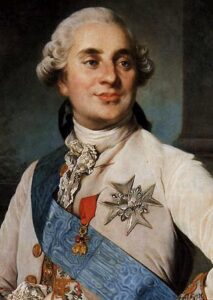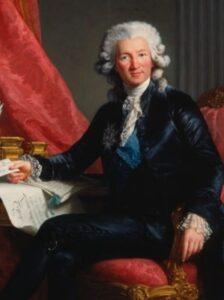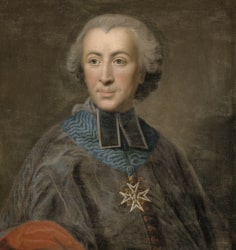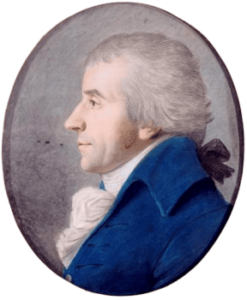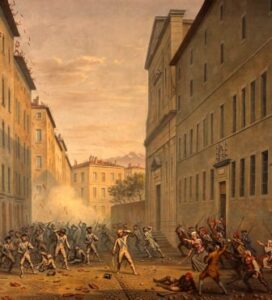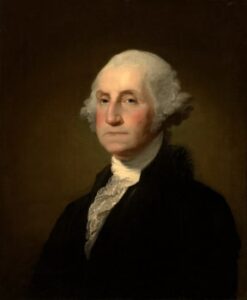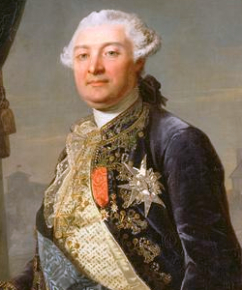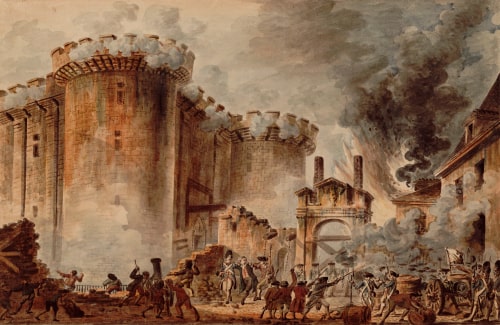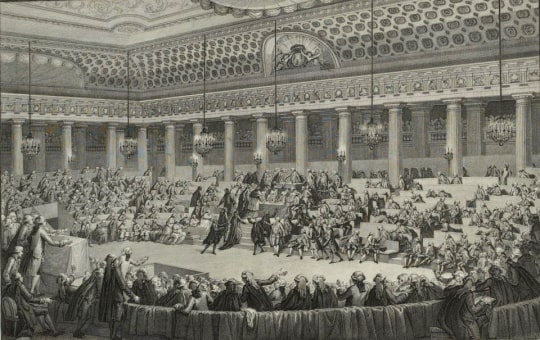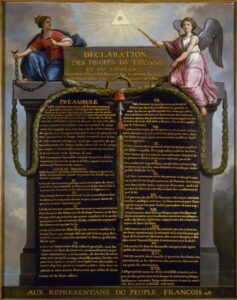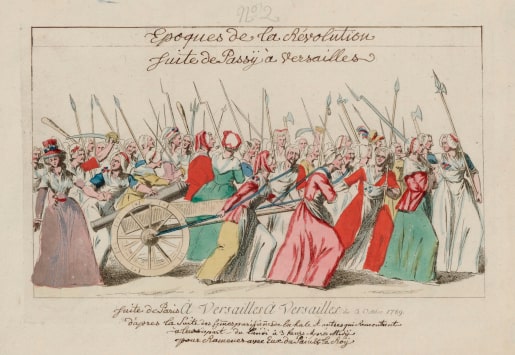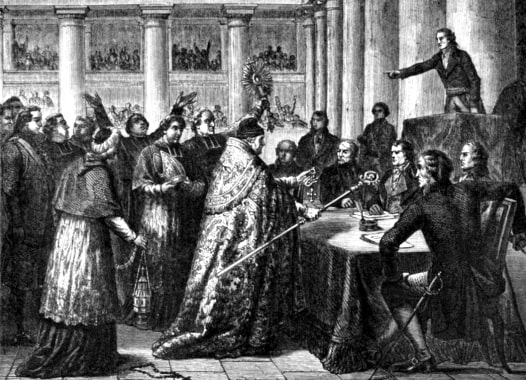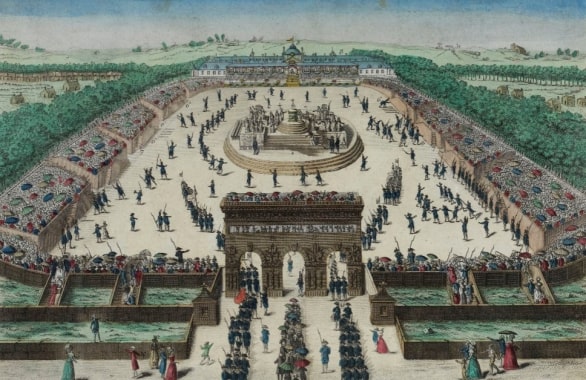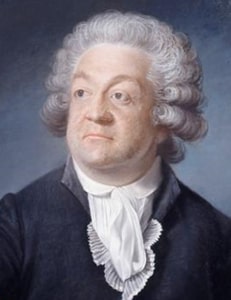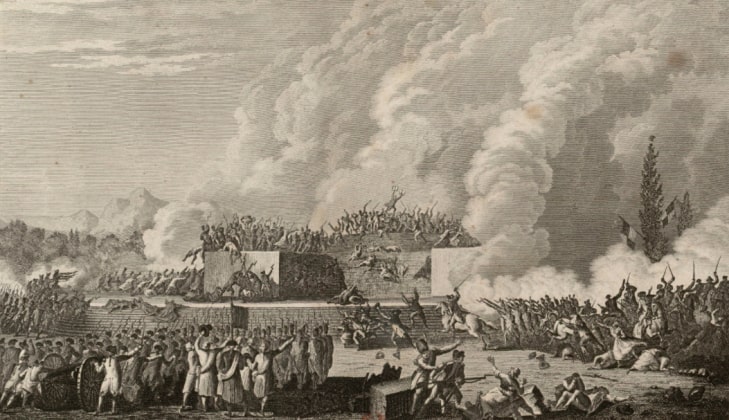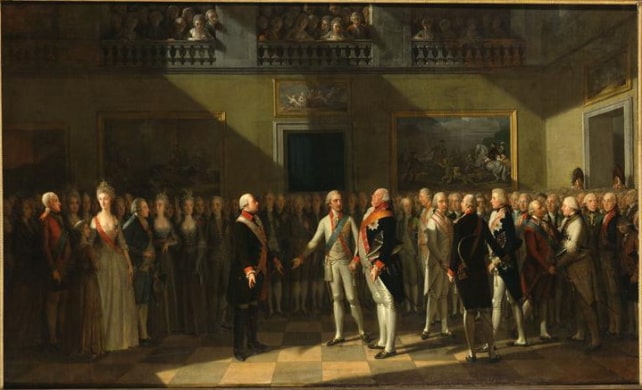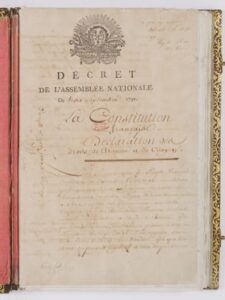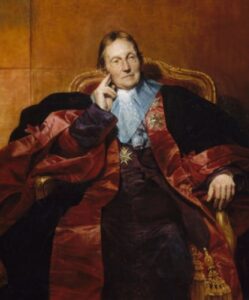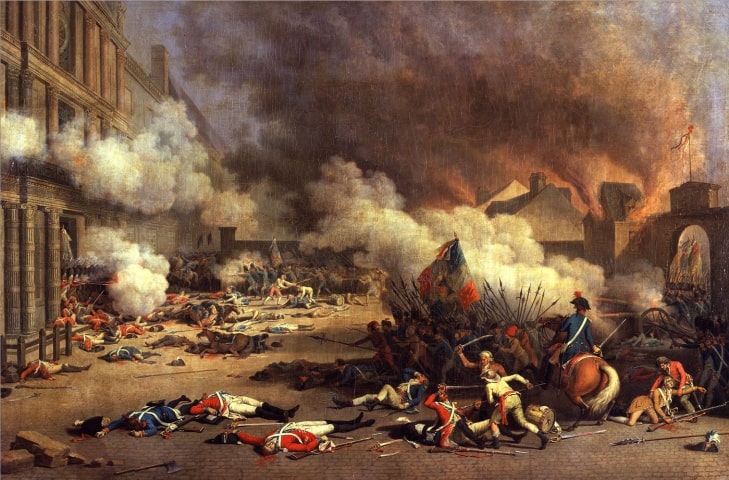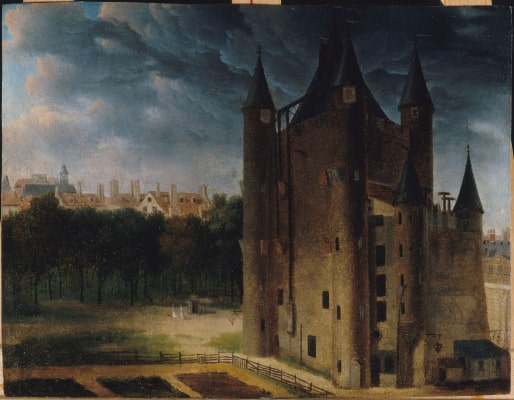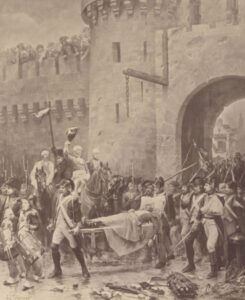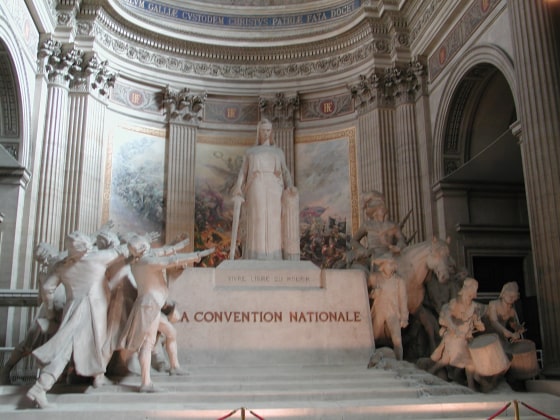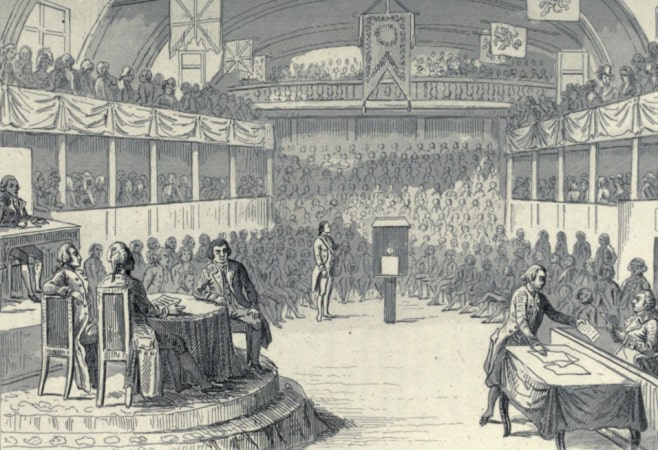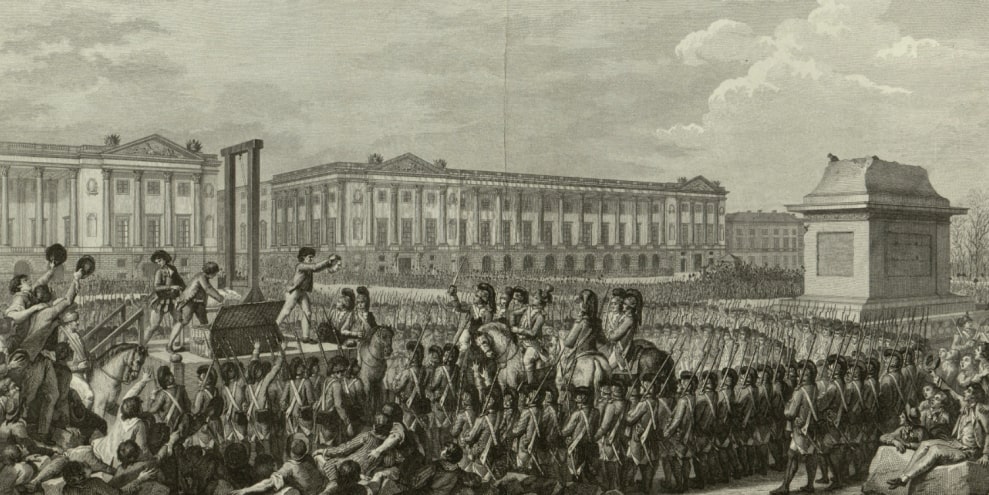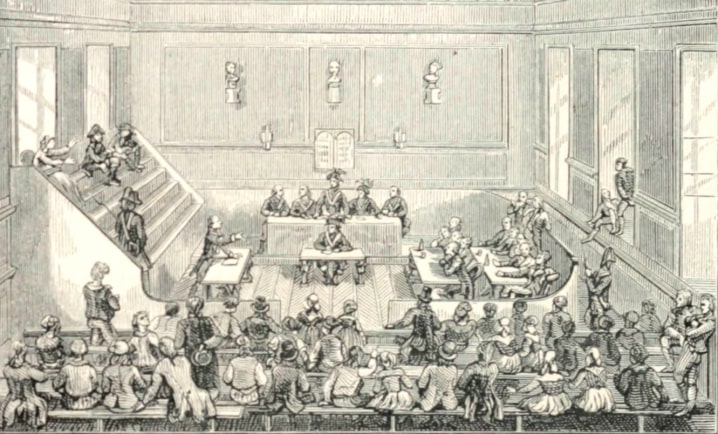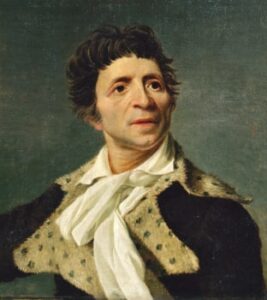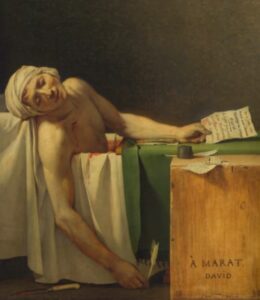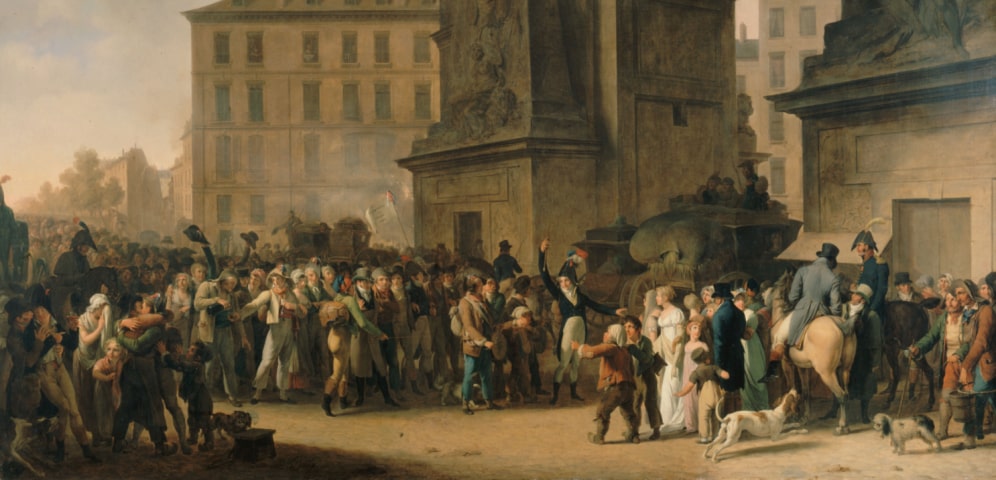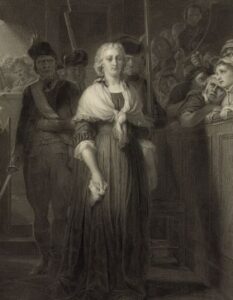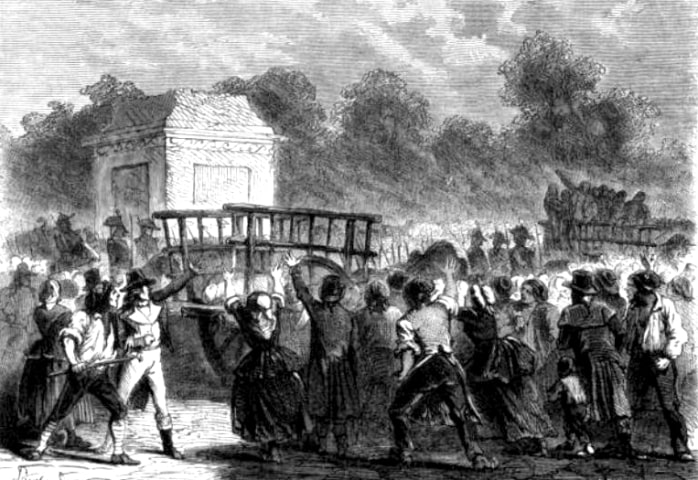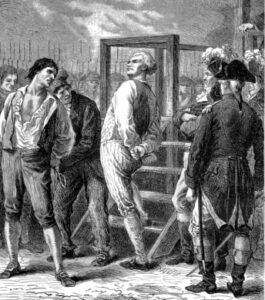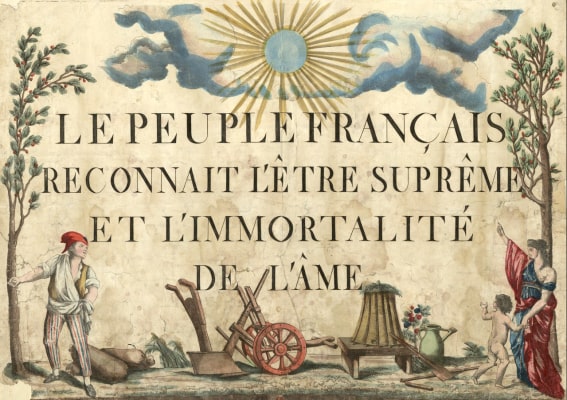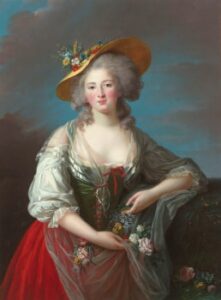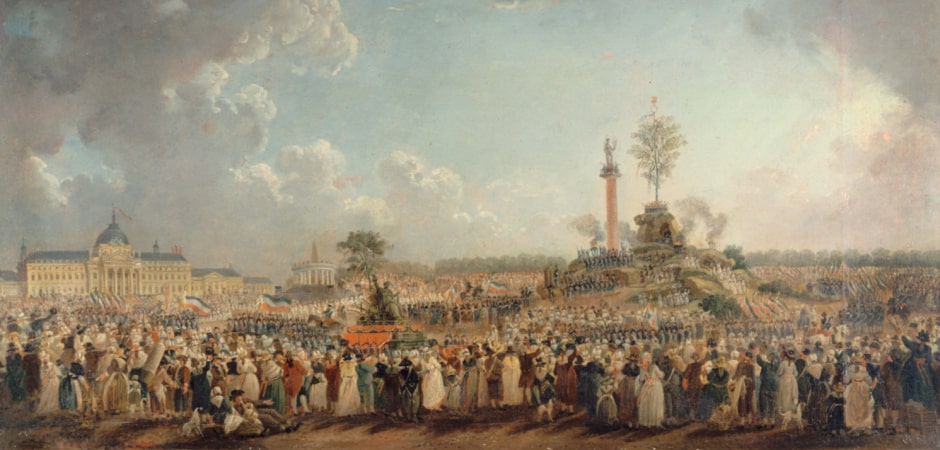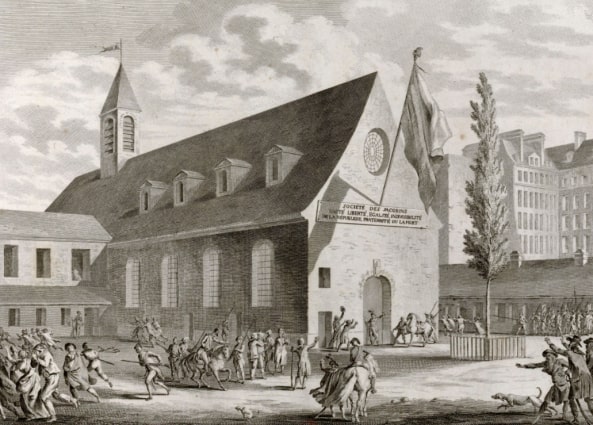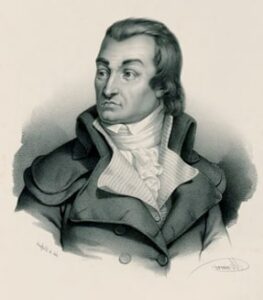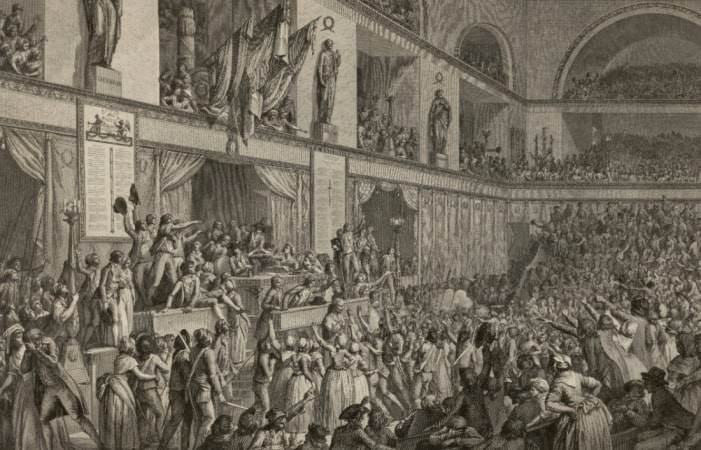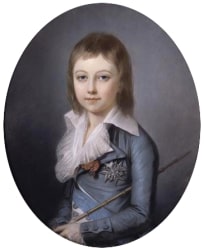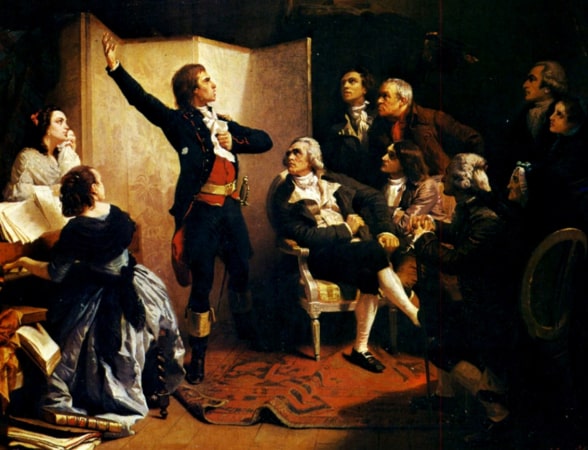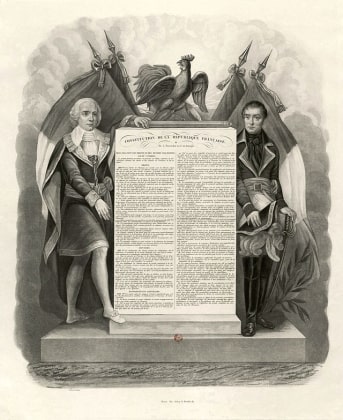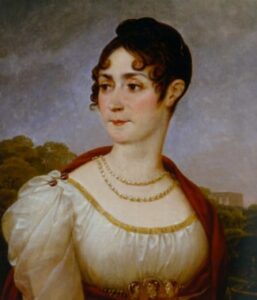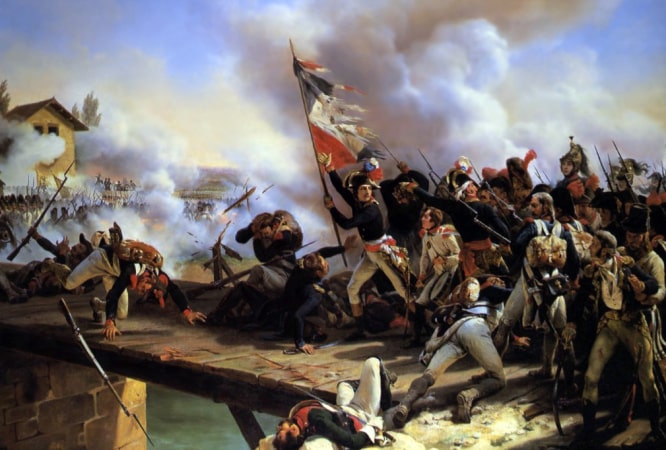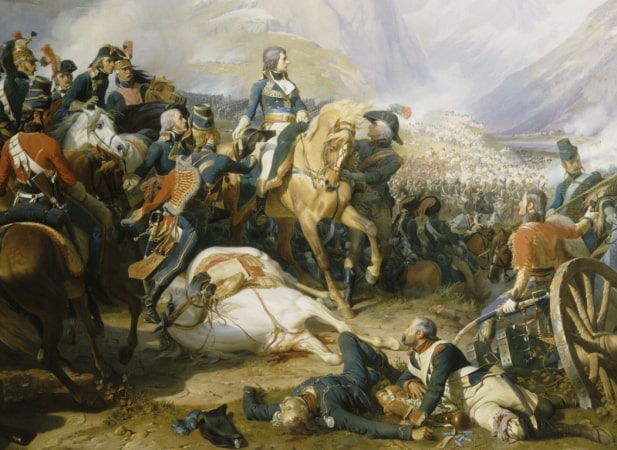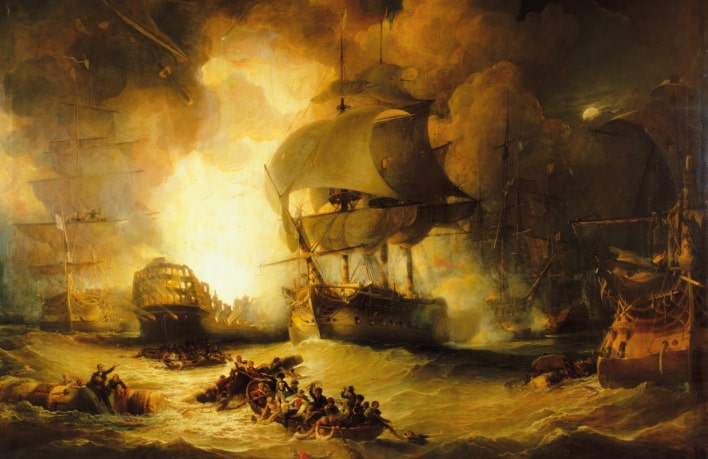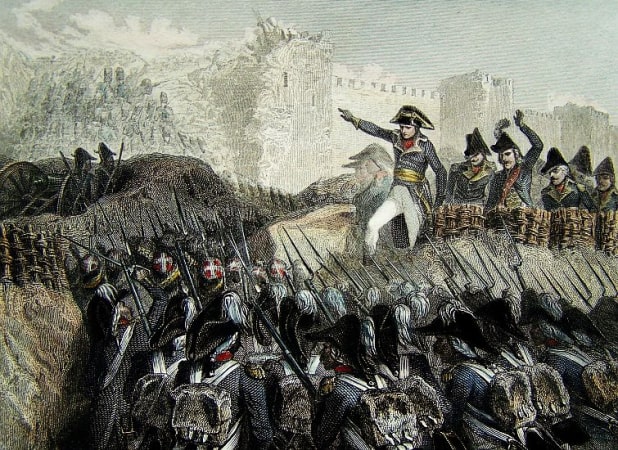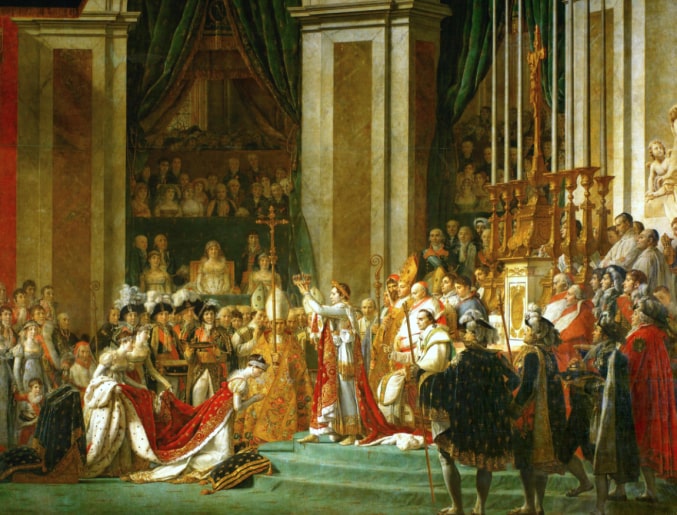The Great French Revolution Timeline is one of the most important events in the modern history of the world that lasted from 1789 until 1799. The Revolution didn’t just take place in 1789. It actually lasted for several years, with far more violent and momentous events taking place in the years.
A major transformation of the social and political system of France from an absolute monarchy to a republic based on the principle of citizenship and inalienable rights.
Timeline Of French Revolution
The site FrenchRevolutionTimeline.com conveys the French Revolution timeline in a simple way including all the major events with Pictures that happened from the beginning with King Louis XVI to the ending of the revolution with Napoleon Bonaparte in the late 1790s.
Pro Tip – This page is too long to read all at once, so I suggest that you bookmark this page – because this blog post will surely be a good read! On PC press Ctrl+D while on Phone press ☆ icon in menu options.
7th July, France enters the American war to aid America. It orders the total mobilization of the French army and navy at war against Britain. Participation in the war has cost the French government more than a million pounds.
The war debtA sum of money that is owed or due. brings the French Monarchy to its knees.
20th August, the new finance minister Charles de Calonne appointed. He informs Louis XVI that the nation faces bankruptcyIn the state of not having enough money to pay loans & debts.. He proposes immediate changes that include a new land tax and stamp duty.
On 22nd February, the first Assembly of Notables convened by King Louis XVI. The Assembly met to tax reforms proposed by Calonne, but the Assembly of Notables opposed them.
On 8th April, Calonne falls out of favor. Louis tries to break the stalemate by firingDischarging from his job. Calonne as finance minister. He was replaced by the new finance minister by Loménie de Brienne to win the support of the Assembly of Notables.
During the months of July-September – The Paris parliament rejects Brienne’s legislative proposals to reform the tax system. The conflict began between the king and the Parliament of Paris.
The ‘Edict of Versailles’ was signed by Louis XVI on 7th November in which non-catholics and Jews granted access to civil and political rights previously denied to them. During this point, the financial and industrial crisesA situation of great danger or difficulty. began in France.
On 8th August, The Meeting of the States-General was scheduled for the 1 st May of 1789, which had not been met since 1614. At the suggestion of finance minister Brienne, the King agreed to gather a meeting, an assembly of the nobilityGroup of people who belong to the highest social class and have special titles such as Duke or Duchess., clergyThe people who perform religious order and conducts religious worship in the Christian church., and civilians (the Third Estate) to hear a list of complaints.
To resolve the kingdom’s financial crises, crop failures and food shortages caused an increase in bread prices. The people suffered from hunger during the year.
During the 26 – 27 April 1789: RiotsA form of civil disorder by a group of people typically involves the destruction of property & authority.. in Paris by workers of the Réveillon wallpaper factory in the Faubourg Saint-Antoine. One of the first instances of violence during the French Revolution began after rumours spread that the factory owner had made a speech stating to the workers. Twenty-five workers were killed in conflicts with the police.
On May 5th, the meetings of the States-General were opened at the Palace of Versailles with the opening speeches by Louis XVI and Necker.
Traditionally, when voting, each estate had one vote. The deputies from the third estate, of whom there were twice as many as the deputies from the first and second, demanded an individual vote. Still, the government did not agree to this.
Instead, Louis XVI decides on the vote by order; the deputies of the Third State protest and organise themselves on June 17 as a “ National Assembly ”. Priests, members of the lower clergy, and nobles join them. This began the first stage of the French revolution.
Later on 17th June, the assembly of deputies of the third estate declared themselves the National Assembly, i.e. representatives of the entire French nation. Also, some members of the First and Second Estates joined the assembly of the Third Estate.
On June 20th: On the orders of Louis XVI, officials locked out the assembly of deputies in the meeting hall. The newly formed National Assembly and its supporters then occupied the king’s indoor tennis court.
They take the famous “Tennis Court Oath”. They swore an oath under which they agreed not to separate until a Kingdom’s Constitution is established.
A majority of the clergy representatives soon joined them.
The king refused to recognize the demands of the deputies of the third estate. The decision of the deputies of the third estate does not change.
On July 9, the National Assembly reorganizes and formally declared itself a National Assembly.
On July 11, 1789, the king dismissed his Minister of Finance Jacques Necker after suggesting that the royal family live according to a budget to conserve funds. He was replaced by Baron de Breteuil, a conservative nobleman who hates political change.
After the news of Necker’s dismissal and the gathering of troops around Paris made an insurrectionA violent revolt against an authority or government.. in the capital on July 12. Paris was soon occupied with riots, attacks on royal officers, and widespread looting.
The mobsA large crowd of people intent on causing trouble or violence disorderly.. soon had the support of the French Guard, including arms and trained soldiers, to establish the National Guard on July 13 to protect the theft and property damage in the city.
Though concerned about the recent breakdown of royal power, Parisians grew panicked as rumours of an impending military coup began to circulate.
The peasants, bourgeoisieThe middle class, typically with reference to its perceived materialistic values or conventional attitudes.., workers, and commoners began to prepare for a popular uprising. On July 14, 1789, the crowd moved to the Bastille to look for weapons, fear being attacked by royal regiments.
A vast armed crowd attacks the Bastille, which holds only seven prisoners but had an ample supply of gunpowder, which the group wants.
The people stormed the Bastille and captured its fortress to secure gunpowder and hoping to seize weapons. Several officials were ordered, including the governor of the Bastille and the mayor of Paris.
This event begins the French revolution; this day is celebrated in France as a national holiday.
July 16th: The National Constituent Assembly insists on Necker’s recall. The king complies and restores Necker as finance minister and removes royal troops from the city’s centre.
The newly elected Paris assembly votes the destruction of the Bastille fortress. Similar committees and local armies were formed in Lyon, Rennes, and other prominent French cities. Louis XVI recalls Necker and adopts the tricolor ribbon the next day.
July 17th: The National Constituent Assembly begins drafting a constitution.
The rumors of an “aristocratic conspiracy” by the king appear throughout France, known as “Great Fear“. In the provinces, the Great Fear of July led to the rise of peasant’s revolt against feudalism, lords, and municipal revolts.
August 4th: The King appoints a government of reformist ministers around Necker. The Assembly, with many noblemen, votes to abolish the privileges and feudal rights of the nobility.
In this way, the National Constituent Assembly abolished feudalism, also known as the August Decrees, sweeping away the seigneurialSeigneurial system was an institutional form of land distribution.. rights of the Second Estate (aristocratsThe aristocracy is a social class that included the upper level of people considers its highest order in society with hereditary rank and titles..) and the taxes gathered by the First Estate (clergy).
On August 26: the Constituent Assembly approved the ‘Declaration of the Rights of Man and Citizen’ draft primarily by LafayetteMarquis de LaFayette was a French aristocrat and military officer who fought several battles in the American Revolutionary War, also appointed as a Commander of the National Guard at Paris.., whose first article states that “men are born, and all live equal in rights“.
The document stated the Assembly’s responsibility to replace the ancien régime and the beginning of a new era with a system based on an equal opportunity, freedom of speech, equality, property stability, popular sovereignty, and representative government. This was the significant contribution of French revolution to the world.
The first issue of Jean-Paul MaratJean-Paul Marat was a French political theorist, physician and scientist. He was a journalist and politician during the French Revolution seen as a radical voice..’s newspaper, ‘L’Ami du Peuple’ (The Friend of the People), a radical publication, appears on September 12th, proposing a radical social and political revolution.
On October 5: the people of Paris, including large numbers of women, march on Versailles. Thousands of women took part in the protest. They joined in the evening by the Paris national guard led by Lafayette.
The women responded to their anger at the harsh economic situations they had to face, such as bread shortages. At the same time, the King and his court held feasts.
They were also demanding an end to Royalist forces to do not obstruct the National Assembly and for the King and his administration to shift to Paris in hopes for poverty to be addressed.
On October 6th: The king agrees to leave Versailles. King Louis XVI and his family were moved from Versailles (the Royal palace) to Paris conducted by the masses and the National Guard. The royal family was welcomed in Paris by a cheering crowd. They take up residence at the Palace of Tuileries.
November 2nd: The National Constituent Assembly votes to nationalize church lands, seize clergy property, and declaring that all religious properties are “at the disposal of the nation” to pay off as public debt. Along with this, the special rights of the clergy and the church’s authority to levy a tax on crops were also cancelled.
January 28: Elimination of civil disabilities and discrimination of Jews.
The Assembly prohibits the taking of religious pledges and suppresses the contemplative religious, monastic orders on the 13th of February. In order to move towards a secular stateIn the state of being not connected with religious or spiritual matters..
The Constituent Assembly abolished the titles, orders, and other privileges of the hereditary nobility on 19th June of 1790.
July 12: Louis XVI accepts and inaugurated the Civil Constitution of the Clergy, subordinating the Church to the civil government, which was never taken by Pope Pius VIPope Pius VI was head of the Roman Catholic Church and ruler of the Papal States in France. and other numerous individuals of the French clergy.
This created a split between those clergy who swore the required pledge and acknowledged the new arrangement between. The resulting years saw violent oppression of the Church, including the imprisonment and killing of priests all through France.
On July 14, 1790 – ‘Federation Day in Paris‘ – The 1st anniversary of the French Revolution was celebrated on the fields of the Champs-de-Mars.
The event was attended by the king, queen, the National Assembly, the government, and a vast crowd. LaFayette takes a civil oath promising to “be ever loyal to the nation, to the law, and to the king; to support with our highest power the constitution declared by the National Assembly and accepted by the king.” This oath was taken by his troops, as well as the king.
The “Fête de la Fédération” was the last event to unite all the people and different clubs in Paris during the Revolution.
September 4: Jacques Necker, the finance minister, is dismissed. The National Assembly takes charge of the public treasury.
On October 21, the National Assembly declares that the tricolor will replace the French monarchy’s white royal flag and fleur-de-lys as an emblem of France. But divergent voices have been heard since April against the Revolution. More and more riots were taking place in France cities like Lyon, Nîmes, Toulouse, Vannes, Toulon, Avignon.
Comte de Mirabeau was elected president of the French Assembly on 30th January 1791. He was one of the top leaders and public speakers of the French political hierarchy in 1789–1791. But, Mirabeau died on 2nd April due to natural causes.
June 14: The Chapelier Law was passed by the Assembly advocated and drafted by Isaac René Guy le Chapelier, suppresses corporations, and prohibiting labor groups, working coalitions, and strikes.
Between 20th – 22nd June in 1791, King Louis XVI and his family attempted to escape from Paris to reach abroad to start a counter-revolution. But they noticed on the way, arrested in the small town of Varennes, and forced back to return to Paris.
The royal family was placed “under the surveillance of the people” at the Tuileries Palace. The incident broke the trust between the king and the people.
July 16: The Assembly declared the king Louis XVI dishonored and restored his prerogativesRights and privileges..
On July 17, 1791: “Massacre at the Champ-de-Mars” – National Guard shooting on the massive crowd gathering on the Champ-de-Mars protesting against the restoration of the king. In the days that follow, tracking down Republicans. Jacques DantonGeorges Jacques Danton was the first president of the Committee of Public Safety. Danton’s role was to overthrow of the French monarchy and the establishment of the First French Republic. and Marat are forced into hiding.
The suspension of rights and privileges of King Louis XVI led to the direct threat of other European powers. This led to the ‘Declaration of Pillnitz’ signed by rulers like Roman Emperor Leopold II of Austria and Frederick William II of Prussia on 27th August 1791.
This intervention of rulers in French affairs made the statement intending to return freedom and power to the King to strengthen the monarchic government in France. The French people expressed no respect for the dictates of foreign monarchs, and the revolutionary authorities declined to accept the demand.
On September 13-14, Louis XVI formally accepts the new Constitution of 1791. The text maintains the Monarchy and grants the right of vetoA veto is the power to unilaterally cancel or postpone the decisions of law. to a king with limited powers.
This compromise did not sit well with influential radicalsRadical is the one who desires extreme change or transforms the order of the society or political system. like Maximilien de RobespierreMaximilien François Marie Isidore de Robespierre was a French lawyer, statesman and a member of the Constituent Assembly and the Jacobin Club. He is best-known and most influential figures of the French Revolution., Camille Desmoulins, and Georges Danton, who began drumming up popular support for a more republican form of government and for the trial of Louis XVI.
On September 28: Slavery was abolished in France but not in the French colonies. Also, French Jews were granted citizenship.
The National Assembly ended itself on September 30th, 1791.
After the closing of the National Assembly, the Legislative Assembly established. The first meeting of the Legislative Assembly was held on 1st October 1971. Claude Pastoret, a monarchist, was elected President of the Legislative Assembly.
Riots and loots grew throughout Paris during January-March due to severe shortages of foods like sugar and coffee.
On 20th April: The newly formed Legislative Assembly declared war on Austria and Prussia, where it believed that French émigrésPeople who has left france and settled down into another nation. were building counterrevolutionary alliances; it also hoped to spread its revolutionary ideals across Europe through warfare.
Louis XVI quietly seeks the defeat of his disorganized French armies. At the same time, France announces battle on the King of Bohemia and Hungary, i.e., to the Holy Roman Empire, to feel that it isn’t doing as such against the Austrian monarchies.
As the Austrian army proceeds slowly toward Paris, eastern France was invaded, Paris was threatened. Prussia goes to war alongside Austria. The Assembly announced the Fatherland in danger (France in danger) on the 11th of July, 1792.
The political crisis took a radical turn when a group of rebels led by the extremist Jacobins from the Marseille and Brittany regions attacked the royal residence.
The Parisians and masses from other regions of France invaded the Tuileries Palace, where Louis XVI lives. The masses attacked the Tuileries Castle, massacred the Swiss Guard, and arrested king Louis XVI with his family on August 10, 1792.
King Louis XVI was overthrown and imprisoned on charges of betraying national interests. The Legislative Assembly resigned. In the absence of the king, there was a need to make a new constitution.
For these purposes, Legislative Assembly removed the king from power and convening a national convention.
August 11: The Assembly elects a new Committee to replace the Legislative Assembly. Jacques Danton was named Minister of Justice. The municipalities were allowed to arrest suspected enemies of the Revolution, and royalist newspapers and publications are banned.
On August 13, King Louis XVI and his family imprisoned in the Temple.
On August 29th, 1792, The Battle of Verdun was battled between the Prussian armed force and the French Revolutionary powers. The Prussians were victorious, captured the Verdun by the soldiers of the Duke of Brunswick, acquiring a make toward the west way to Paris.
‘September Massacres’ in prisons of Paris during September 2-6, 1792:
The alarming news about the progress of the allies towards Paris serves as a pretext for the organization of a cutthroat group of workers that, with the support of Marat from the communeA group of people living together and sharing possessions and responsibilities. and with the tolerance of Jacques Danton from the Ministry of Justice.
An unleash crowd landed at the prison’s place and killing cruelly 1200, including those who were not revolutionaries, aristocrats, and 100 priests assassinated.
And the princess of Lamballe place (governess of the royal children) was detained and killed very brutally. This horror scene is replayed, on September 2 and 3, in several jails in the capital.
New elections to the Assembly was organized after the arrest of Louis XVI. These were the first elections; although only ten percent of the French exercise their right to vote, it is the first parliament in history elected by universal male suffrageIt was a form of voting rights where adult male citizens within a political system were allowed to vote, regardless of religion, race, income, property or any other qualification. The slogan sometimes summarizes it, “one man, one vote”..
The new Assembly takes the name of “National Convention”. The Convention meets, declares the Monarchy ended. The first Republic in the history of France was proclaimed on September 21st, 1792.
Power is no longer inherited. From the start of the Convention, the deputies were divided between the moderate revolutionaries (the GirondinsThe Girondins were active in the Legislative Assembly and the National Convention. Together with the Montagnards, they initially were part of the Jacobin movement.) on the one hand and the radical deputies (the MontagnardsThe Montagnards were members of the National Convention and a part of the Jacobin club. They were the most radical group and opposed the Girondins.) on the other.
December 11. The King’s trialA trial is a legal gathering in a law court, at which a judge and jury listen to the evidence and decide whether a person is guilty of a crime. began on December 11 1792.
While on December 27, Movements in the Convention were asking that individuals vote on the King’s judgment. The movement is gone against by Robespierre, who proclaims, “Louis must die so that the nation may live.” The Convention dismisses the action for French voters to decide the King’s destiny.
Despite the defence of the Girondins, the radical members of Jacobins insisted on bringing the former king to the court of the Convention. Convention votes by the majority on his death punishment.
On January 21, 1793, King Louis XVI was beheaded by guillotine at the Place de la Révolution at the age of 38. Louis XVI’s wife, Marie-Antoinette, suffered the same fate nine months later.
The execution of the king led to the breaking of diplomatic relations between England and France. The Revolution became more and more radical and violent!
March 10, 1793: Creation of the Revolutionary Court. Which was supposed to judge “spies, conspirators and counter-revolutionaries”, and after it – the Committee of Public Safety, which was to regulate the domestic and foreign policy of the country.
At the same time, the list of allegedly executed with the death punishment was being expanded. In the following days, the catholic and monarchical region of the Vendée took up arms against the Republic.
April 5th: Jean-Paul Marat was elected head of the Jacobin Club.
On April 13th: Marat was arrested for having encouraged an uprising against the Convention. The Girondins are at the origin of the plan.
Eleven days later, on April 24th, Marat was taken to Revolutionary Tribunal and is cleared of all charges. Setback for the Gironde. The triumph of Marat after his release from arrest. His release causes riotous celebrations by his radical supporters of the Jacobin Club.
Committee of Public Safety established by the Convention led on 6th of April, 1793, mainly by extremist Maximilien Robespierre was a member of Jacobin Club. The Committee was formed to protect the new republic against its foreign and internal enemies.
As a wartime measure, the Committee was given broad supervisory and administrative powers over the armed forces, judiciary and legislature, and the executive bodies and ministers of the Convention.
May 4: Due to the crop failure and food shortages, and the demand of the Paris section of Saint-Antoine, the National Convention imposed a maximum price for grain and bread.
May 24: At the demand of the offensive Girondins, the Convention must arrest the ultra-revolutionary radical enragés leadersEnragé is a group of extreme revolutionaries who advocated social and economic measures in favour of the lower classes. Jacques René Hébert and Jean Varlet.
The Girondins also criticizes the members of the National Convention. (Because of the National Convention for failure to carry out the promises of the French Revolution).
May 26: Robespierre and Marat from the Jacobin Club call for an insurrection who were against the Convention.
On June 2, a crowd gathered at the Convention, demanding the suspension of the Girondins. The sans-culottesThe sans-culottes were the common people of the lower classes, a majority of whom became aggressive partisans in response to their bad quality of life under Ancien Régime. and soldiers of the Paris Commune, led by François HanriotFrançois Hanriot was a French Cordelier leader and a street public speaker., occupy the hall of the Convention and force it to vote for the arrest of 29 Girondins deputies & two ministers.
On July 13: Jean-Paul Marat was assassinated in his bath by a lady Charlotte Corday. At her trial, she says, “I killed one man to save a hundred thousand.”
July 17: Charlotte Corday was sentenced to death and guillotined by the Revolutionary Tribunal for the charges of murdering Marat.
July 27: Robespierre elected to the Committee of Public Safety while Danton moves away from political life.
A judgment granting the Committee of Public Safety the right to make arrests and Convention initiates the death penalty for those who store or hide scarce goods.
The incorporation of Robespierre, replacing a lower-ranking deputy, crowns the arrival of the Jacobins to power and marks the beginning of the Terror in France.
August 2: Marie-Antoinette was transferred from the Temple prison to the prison of Conciergerie.
August 23: The “Levée en masse” voted and passed by the Convention. It includes all non-disabled non-married men between ages 18 and 25 in France must serve in the army to defend the fatherland against foreign invaders.
On October 5, 1793, a new republican calendar was introduced into circulation, the first year according to which was 1792. All months in the calendar received new names. But in 1806, the calendar was removed.
On September 17th, 1793: The Convention passed the “Suspicious Law”,. This law ordered to keep under arrest all people claimed or suspected enemies of the Revolution even who were not involved in any crime but could charge it.
The riots began with this new ‘law of suspect’, which established the panic in France.
October 16, 1793. The dethroned queen was guillotined after a false trial in the Revolutionary Court, during which she was accused of having abusive relations with his son.
On October 31st: 22 Girondins were guillotined by the Revolutionary Tribunal, accused of having made a pact with the allies. A week later, Manon Roland, a revolutionary writer, was in turn executed.
On 10th November 1793: The Cult of Reason was a state-sponsored atheisticDisbelieving or lacking faith in the existence of God. belief planned as a replacement for beliefs of Catholic Churches in France. Robespierre, in particular, is doing everything to reverse the trend.
February 4: The Convention votes to abolish slavery in French provinces. The decision is, above all, an officialization of that of the Girondin Sonthonax, who abolished it in Santo Domingo several months earlier by observing the uprising of the slaves. Different colonies refuse to apply the decision, taking advantage of their remoteness.
February 5: Robespierre speaks the Convention on the need for the Terror: “The establishments of a popular government in a revolution are virtue and Terror; Terror without virtue is disastrous, and virtue without Terror is powerless. The Government of the Revolution is the dictatorship of freedom over oppression.”
March 13: Saint-Just, President of the Convention, charges a conspiracy against liberty and the French people. Famous leaders like General Hoche and many journalists like Jacques-René Hébert, as well as the members of the Cordeliers Club, were arrested. The Girondins, it was those called the “exaggerated” who were also arrested.
March 15: The Public Health Committee led by Robespierre detains the leaders of the most radical sector of the revolution.
March 24: Hébert and the leaders of the Cordeliers were condemned to death and guillotined along with the other leaders.
March 27: Condorcet, a philosopher and mathematician was arrested. He was found dead in his cell two days later.
The exaggerated eliminated. It was the faction of the “indulgent” which was targeted. Jacques Danton, and journalist Desmoulins were arrested on March 30. Danton had been advised to flee; he had refused.
Robespierre practically became the dictator of France.
April 2: Trial of Danton before the Revolutionary Tribunal. He uses the opportunity to expose and insult his opponents.
April 4: The Convention proclaims that any individual who insults the justice system is excluded from speaking, banning Danton from guarding himself.
On April 5, along with Danton, other leaders were executed.
With the death of Danton and other leaders, Robespierre became a famous revolutionary figure. Until July, he, to a great extent, controlled the political scene, which all things remained divided.
May 7th: The introduction of the cult of the Supreme.
Robespierre asks the Convention to order “that the French people recognize the existence of a Supreme Being and the immortality of the soul” and organize celebrations of the new cult. Again it was a supreme belief planned as a replacement for the beliefs of Catholic Churches in France.
June 4: Robespierre was popularly elected president of the Convention.
June 8, 1794: The day of the inauguration of the cult of the Supreme Being. Feast of the Supreme Being, conducted by Robespierre.
The Convention pays tribute to the divinity in a ceremony in which Robespierre, as president of the Assembly, acts as pope for the scandal of the sectors supporting atheism and de-Christianization.
Some deputies visibly show annoyance with his behaviour at the Festival.
The Law of 22 Prairial, also known as the “Loi de la Grande Terreur”, the law of the Great Terror, was implemented on 10 June 1794. This increases the power of the Revolutionary Court, leading to mass executions.
The Convention speeds up the trials and execution procedures of those arrested. Witnesses were no longer required to prove. The Convention also gives itself the exclusive right to arrest its own committee members.
The victims were intended for the guillotine from June 11 to July 27 in 50 to 60 groups at a time.
Around 1,376 prisoners are sentenced to death, with no discharges, compared with 1,251 death sentences in the previous fourteen months. An estimated 2,750 people were executed, the vast majority of whom were poor.
Apparently, this law planned by Couthon, on the side of Robespierre, was expected to start a decrease in executions by strengthening their control by the Committee. However, the enemies of Robespierre inside it exploited this to build the executions in his absence, and he makes them carry the responsibility.
June 29: Dispute within the Committee of Public Safety. Famous members like Billaud-Varenne, Carnot and Collot d’Herbois accuse Robespierre of behaving like a dictator.
July 1: Robespierre speaks at the Jacobin Club, exposing a conspiracy of members against him inside the Convention, the Committee of Public Safety, and the Committee of General Security.
July 9: Robespierre talks again at the Jacobin Club, denying he has effectively made secret hidden targeted lists of members inside the Convention and refusing to name those he plans to arrest.
July 23: Robespierre attends a meeting of compromise with the individuals from the Committees of Public Safety and General Security. The problem seems to be settled.
July 26: Robespierre gives a violent speech at the Convention, demanding, without naming them, the arrest and punishment of “spies” in the Committees of Public Safety and Convention. The members first vote to publish the speech. Still, Billaud-Varenne and Cambon are the convention members, demand a list of names and attacked Robespierre. The Convention sends Robespierre’s speech to the Committees for additional investigation without activity.
July 27: At noon, Robespierre brother Saint-Just began his speech in the Convention, arranged to blame everything on opponents members like Billaud, Collot d’Herbois, and Carnot. After a few minutes, he was interrupted was being attacked by convention members.
In the morning, Robespierre and his supporters were taken to the Revolutionary Tribunal for proper identification.
When the allegations started to accumulate, the Convention voted the arrest of Robespierre and of his younger brother Augustin Robespierre, Saint-Just, Couthon, and Lebas.
In the evening of July 28, Robespierre and about 150 of his supporters, including his brother, Saint-Just, Couthon, and Hanriot, were guillotined. Their executioners attribute to them the excesses of the Revolution, the better to clear themselves of it.
August 5: Prisoners of Paris arrested under the terror of “Law of Suspects” were released.
September 18: The Convention stops paying officially supported priests and quits managing church properties. Financial support for all forms of religious worship removed.
November 9: Muscadins (mobs of young men) attacked the Jacobin Club. The attack was repeated on November 11.
November 12. The Jacobin Club was abolished ordered by the Convention, and Jacobin Club closed.
December 16: Execution of Jacobin Carrier, one of the most brutal places of the Terrorists.
While France is facing the terror of death, on the other hand, the French army of Pichegru captured Amsterdam On January 19. Later on January 21, again, the French cavalry captured the Dutch fleet, trapped in the ice at Den Helder.
February 21: On a proposal by Boissy d’Anglas was a French writer, lawyer, and politician. The Convention declares freedom of religion and the separation of church and nation.
February 22: In the Convention, the deputy Rovère demands the punishment of Jacobins who carried out the Terror. Several former Jacobin leaders in Lyon placed under arrest, who conducted the Terror there, were assassinated, beginning of the so-called First White Terror.
March 28: Beginning of the trial of Antoine Quentin Fouquier-Tinville, the head of the Revolutionary Tribunal, who conducted the trials of many people during the Reign of Terror.
On 7th May: The public prosecutor Fouquier-Tinville guillotined.
April 11: The Convention returns civic rights to all citizens declared outside the law since May 31, 1793.
April 19: Six Jacobins killed in Bourg-en-Bresse who involved in the Terror.
May 20: Jacobins and sans-culottes attacked the Convention and killed deputy Féraud. The army responded quickly and clears out the hall. The Convention votes for the arrest of attackers.
May 21: New uprising of Jacobins and sans culottes in Paris; they occupied the Hôtel de Ville.
May 22: Third day of uprising in Paris. The Convention orders the army to occupy the Faubourg Saint-Antoine.
May 24: The army secures the Faubourg Saint-Antoine and disarms and captures the members of the uprising.
May 28: The last Jacobin former members of the Committees of Public Safety and General Security are arrested and end the movement.
May 31: The Convention abolishes the Revolutionary Tribunal.
June 8th, Death of Dauphin (10-year-old Louis XVII) in prison, the eldest son and successor of the French king, who in royalist’s eyes was King Louis XVII since the execution of his father. The Count of Provence assumes the title of Louis XVIII.
On July 14th, 1795: The “La Marseillaise” was declared a national song of France.
After entering the war against Austria on April 25th, 1792, officer Claude Joseph Rouget de Lisle composed the first verses of a patriotic song called “War Song for the Army of the Rhine”.
It met with great success and was taken over by the Marseillais volunteers when they entered Paris in August 1792. The Parisians called it the “Marseillaise”.
Today, The Marseillaise became the national anthem of France.
On August 22: The National Convention, composed mainly of Girondins who had survived the Reign of Terror, approved a new Constitution of Year III that created France’s first bicameral legislature that was Directory Rule.
The legislative power in directory was committed to two assemblies, an upper and lower house of the parliament, the American and British models, and executive power to five directors, hence establishing the Directory.
On September 23, 1795: The Directory was approved by a national poll, the new Constitution of the Year III comes into effect.
On October 26: The new Constitution is voted by the Convention. The directory was inaugurated.
February 2nd, 1796: The Directory appointed Napoleon Bonaparte as General-in-Chief commander of the French army in Italy.
March 9: Napoléon Bonaparte marries Josephine de Beauharnais, the widow of French general Alexandre de Beauharnais, executed during the Reign of Terror.
On April 10: Napoleon’s ultimately victorious campaign against Austrians at Montenotte and the Sardinians at Millesimo in Italy begins.
On May 10: Bonaparte defeats the Austrians at the Battle of Lodi, the beginning of the great victories of Bonaparte on the peninsula.
On August 5: Bonaparte defeats the Austrians under Wurmser at the Battle of Castiglione.
On September 8: Bonaparte defeats the Austrians under Wurmser at the Battle of Bassano.
On November 15–17th: Absolute victory of Bonaparte over the Austrians at the Battle of Arcole.
On January 14th, 1797: Bonaparte defeats the Austrians at the Battle of Rivoli by capturing Italy.
May 20: New session of the French legislature begins. The elections resulted in a royal majority, produced a more radical result.
The royalist director Pichegru was chosen president of the Council of Five Hundred members. Another royalist, François Barbé-Marbois, becomes president of the Council of Ancients.
June 24: Director Paul Barras contacts General Hoche, seeking support for a coup d’état against the royalist majority in the two Councils.
June 27: The royalist majority in the Councils repeals the law of October 25, 1795, which added punishments against refractory priests and émigrés.
July 16: Conflict within the Directory between Barthélemy and Carnot the monarchists, and the three pro-republican directors, Barras, La Révellière-Lépeaux, and Rewbell.
July 20: Barras produces evidence that General Pichegru was in secret contact with Louis XVIII and the monarchists. Carnot joins sides with the three republican directors.
July 27: Bonaparte sends General Augereau to Paris as military commander of the city to support a coup d’étatA coup d’état is a illegal way of removing a government and its powers by a political group, the military, or a dictator. against the royalists.
October 17: Treaty of Campo-Formio, the sign of peace with the Austrians. Austria wins Venice and its boundaries, while France receives Belgium and the right bank of the Rhine River as far as Cologne.
This treaty was mainly negotiated by Bonaparte alone, without referring to power. His personal power was increasing, which is not to the taste of the directors.
In April 1797: The results of partial legislative elections gave a majority to the royalist tendencies. 205 of the 216 deputies running were defeated, and many were replaced by royalists. The conflict between the Councils and the Directory, which asks for the support of the army.
May 19: The removal of the Egyptian soldiers from Toulon for Egypt. under the command of Napoleon Bonaparte. The aim was both to cut off the British route to India and to turn away.
June 9–11: Bonaparte invades and captures Malta.
July 1th–2nd: Bonaparte lands in Egypt and captures Alexandria.
On July 21: Bonaparte defeats the Mameluks at the Battle of the Pyramids.
On July 24: Bonaparte and his army enter Cairo.
But on August 1: Absolute victory of Britishers by the royal navy officer Admiral Nelson over the French fleet in the Battle of the Nile.
September 5: The French legislature demands all French men between the age of 20 to 25 of people to perform military service.
On September 24: The French government calls 200,000 men for military service.
March 7th: Bonaparte captures Jaffa in Palestine. Some of his soldiers were infected with the plague disease.
March 11th: Bonaparte visits the hospital for plague sufferers in Jaffa.
On March 19: Bonaparte lays attack on Saint-Jean-d’Acre in Palestine.
March 28: Bonaparte attempts unsuccessfully to capture Saint-Jean-d’Acre.
April 1: Bonaparte fails again to capture Saint-Jean-d’Acre.
April 24: Bonaparte fails a third time to win Saint-Jean-d’Acre.
May 1: Bonaparte loses for the fourth time, too, to capture Saint-Jean-d’Acre.
May 10: 5th was the last attempt made by Bonaparte to capture Saint-Jean-d’Acre but again lost. He lifts the siege and returns to Egypt on May 17.
On April 9: The beginning of legislative elections in France to replace one-third of members.
April 18: French elections result in a major loss for supporters of the government and a victory for the extreme left.
April 1799: Elections unfavorable to the Directory. But favorable to a constitutional change.
August 23: Bonaparte had no news from France in six months. The British admiral Sir Sidney Smith sends him a pack of French newspapers, which he reads in one night. He hands over command of the army to General Kléber and leaves Egypt returned to France on August 23, 1799.
October 16: Bonaparte arrives in Paris for public celebrations, leaving Egypt before the situation turns into a disaster.
November 1: Bonaparte meets with Sieyès, one of the directors, who wanted to strengthen the governing power after the years of the political instability of the Directory rule, allied with Bonaparte. Together, they were planning a military overthrow. Bonaparte takes the command-in-chief of the army to maintain order in Paris and in the assemblies.
November 3: Bonaparte meets with Fouché, the Minister of Police, who agrees not to stop during a coup d’état.
November 8: Bonaparte meets with Cambacérès at dinner and arranges the final details of the coup d’état.
Bonaparte speaks first to the upper house of parliament, explaining the need for a change in government. The Council listens in silence and votes to accept Bonaparte’s advice without opposing.
But, on the other hand, the opponent members complain angrily, insult, and shout down Bonaparte, threatening to declare him outside the law, which would have led to his quick arrest.
While the members argued in great confusion inside, Lucien Bonaparte takes Napoleon Bonaparte outside. He tells the standing soldiers that the deputies had tried to assassinate Bonaparte. The soldiers, furious, invade the meeting hall and chase out the deputies at the point of spikes.
In the absence of the opposition deputies, Bonaparte and the other parliamentary commissions like brother Bonaparte, Sieyès, and Duclos as the provisional consuls form a new government on the 9th of November.
Napoleon Bonaparte puts an end to the Directory Rule and appointing himself France’s “First ConsulAn official appointed by a state to protect the state’s citizens and matters.,” at that time was the effective dictator, Berthier as minister of War, Talleyrand in charge of foreign relations, Fouché as minister of Police, and Cambacérès as minister of Justice.
By the end of the day, Paris was entirely under the control of Napoleon Bonaparte and officers loyal to him.
On December 24th, 1799: The Councils, now strongly under the control of Bonaparte, adopted the Constitution of the Year VIII. The new Consulate was formally established, with Bonaparte as First Consul, Cambacérès as Second Consul, and Charles-François Lebrun as Third Consul.
Traditional histories mark this date as the end of the French Revolution and the beginning of the Napoleonic era. France would come to rule much of Europe.
The Bank of France was the first bank in the history of France, founded on 18th January 1800 by Napoleon Bonaparte. In 1803 it received the monopoly right to issue banknotes in Paris.
Napoleon Bonaparte signed the “Concordat with the Pope” on July 15, 1801, in Paris. It puts an end to 10 years of the status of the Roman Catholic Church caused by the church reforms and laws passed during the French Revolution.
The Catholic religion was declared the “religion of the great majority of French citizens,” thus maintaining religious freedom concerning Protestants. In return, the Pope accepts that the priests be appointed by the First Consul, Napoleon Bonaparte.
At the height of his popularity, Napoleon decided to appeal to the people, and, on August 2, Bonaparte was elected Consul for life. Two days later, the Constitution of Year X proclaimed: it reorganized the Consulate to strengthen its powers.
Napoleon held the Civil Code declared on March 21, which applied to all French people throughout the country. It dedicates the significant advances of the Revolution (freedom, property, secularism, abolition of the privileges of the Ancien Régime, etc.).
Except for the rights of women who do not enjoy the same rights as men. The Civil Code, which has since been extensively changed, remains the foundation of French civil law today.
Crowning of Napoleon emperor – The Republic was no more, France becomes an Empire. Napoleon Bonaparte was crowned as emperor on December 2, 1804, by the Pope at Notre-Dame Cathedral in Paris.
French Revolution Timeline Infographic Chart

One request?
I’ve put so much effort into making this educational website to provide value to the seekers who want to know the timeline of the French Revolution in an easy and simple way.
It’ll be very helpful for me if you consider sharing it on social media networks.
SHARING IS ♥️

